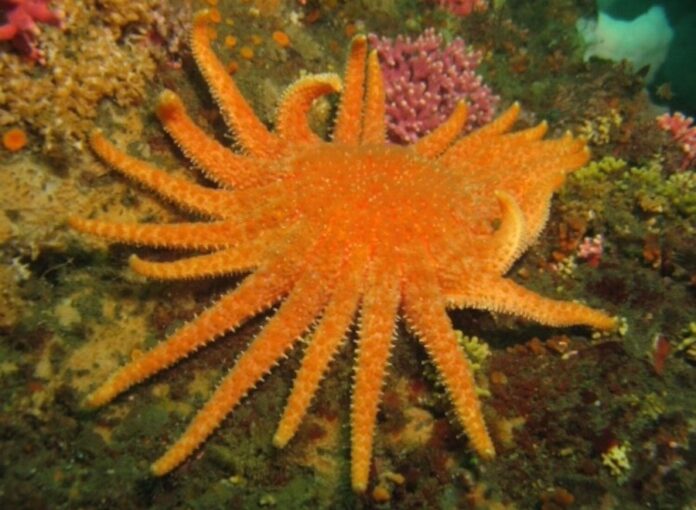Alarming decrease of the sunflower sea star population associated with ocean warming
A recent study led by UC Davis and Cornell University on the correlation between warmer ocean temperatures and the increased effects of an epidemic serves as a reminder that climate change is an increasingly dangerous issue. In investigating the relationship between these raised temperatures and the prevalence of P. helianthoides, or sunflower sea stars, researchers discovered that warming ocean temperatures contributes to the increased susceptibility of the population to the sea star wasting disease.
According to Joe Gaydos, a wildlife veterinarian and science director for SeaDoc Society, the team started their research back in 2013 when the outbreak began. As stated by Diego Montecino, a current Ph.D. graduate student at UC Davis, 10,000 recreation-trained divers helped collect data on the prevalence of sea stars in areas ranging from California to British Columbia over more than a decade.
After comparing this data, a team including Gaydos, Montecino and Drew Harvell, a professor of ecology and evolutionary biology at Cornell University, published a paper titled “Devastating Transboundary Impacts of Sea Star Wasting Disease on Subtidal Asteroids” in 2016. It soon became apparent to them that the sunflower sea star population had decreased at unprecedented levels, leading them to conduct further research on the species. In order to examine the possibility of the sunflower sea stars retreating to deeper levels of the ocean to escape the SSWD, the team obtained trawl data from the National Oceanic and Atmospheric Administration in addition to data from scientific transects conducted by the Hakai Institute.
“The idea was to compare in both habitats, near shore and deep waters, the trend of sunflower star abundance over time, pre outbreak and post outbreak,” Montecino said.
The data’s confirmation of the species’ poor condition led the researchers to examine the sea surface temperature, as the data suggested that this outbreak spread from California up the coast. What the team found was a tight correlation between the increase in water temperature and the sunflower star’s susceptibility to disease. However, according to Gaydos, this knowledge was not surprising, as the increase in water temperature would change the coelomic fluid of the sea star and put stress on their simple immune systems. In addition, previous research conducted on the ochre star, an intertidal sea star, demonstrated how spikes in warm ocean temperatures were associated with a worsening of the disease.
“The main takeaway is the speed with which a multi-host infectious disease can cause decline in the most susceptible host and that warming temperatures can field bigger impacts of disease outbreaks,” Harvell said.
The effect of warm ocean waters on the increased mortality of the sunflower star does not only affect this population, but additionally threatens the sea urchin population in surrounding areas. Since the sunflower sea star is a predator of the sea urchin, the decreasing prevalence of this predation results in an increase in the number of sea urchins, leading to the overgrazing of kelp. Gaydos stated that abalone fisheries have had to close along the coast of California due to the disappearance of kelp. Furthermore, with the increased movement of marine populations accompanying the changes in water temperature, Gaydos predicts that many diseases will be transferred throughout the ocean along with the animals. These consequences, along with the stress put on the animals, led the team to predict that similar scenarios will continue to occur.
“I think the important thing here is that, you know, we think a lot about climate change and we think it’s going to raise sea level and stuff like that, but I think what a lot of people don’t think about is it’s going to change things in ways that we don’t necessarily expect and these disease epidemics are one way that shows the complexity of the way that that works,” Gaydos said.
In addition to listing the sunflower sea star as an endangered species, the team
recognizes a need to rescue the population. Harvell stated that convening a team of experts to discuss the priorities for recovery and considering a captive breeding program may be helpful in the road toward increasing the sunflower sea star population. Montecino also attested to this and pointed to the need for further research on the cause of SSWD and the relationship between its pathogen with other sea star species. Climate change, however, remains the vital issue to be addressed.
“It’s a huge task, but this is just a reminder that we can’t stop thinking about that,” Gaydos said.
Written by: Michelle Wong⸺science@theaggie.org




